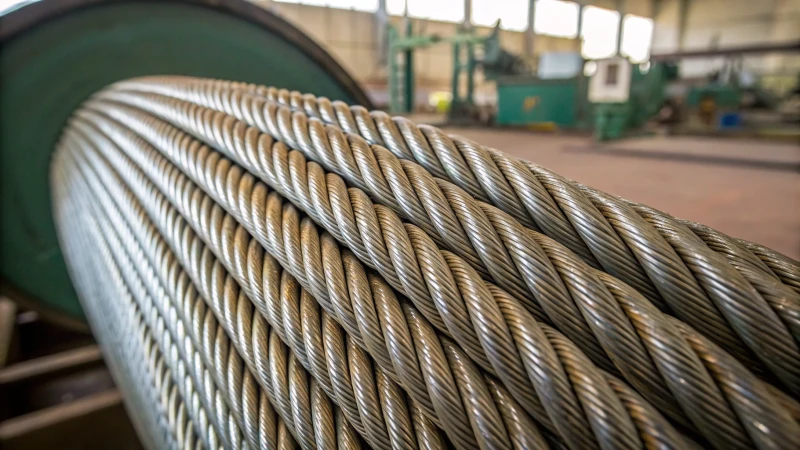
Navigating the world of high-speed elevators requires precision, especially when choosing steel wire ropes.
To select the best steel wire rope for high-speed elevators, focus on those with high tensile strength, low elongation, and excellent resistance to dynamic stresses. Opt for constructions like 8×19 or 8×36 for flexibility and wear resistance, and consider polymer coatings to reduce friction and extend service life.
I remember my first major procurement project involving high-speed elevators. I was overwhelmed by the technical jargon and endless specifications. But then, I realized it was about more than just the numbers. It was about understanding how each feature—tensile strength, elongation, flexibility—translated into real-world performance. Selecting the right steel wire rope wasn’t just ticking boxes; it was about ensuring safety and efficiency, knowing that every ride would be smooth and secure. Exploring constructions like 8×19 or 8×36, I learned how their design impacted durability and performance under stress. And discovering polymer coatings was a game-changer, offering enhanced longevity through reduced friction.
8×19 construction ropes are ideal for high-speed elevators.True
8×19 ropes offer flexibility and wear resistance, suitable for elevators.
Polymer coatings increase friction in steel wire ropes.False
Polymer coatings reduce friction, extending the service life of ropes.
What Makes Steel Wire Ropes Perfect for Elevators?
When it comes to elevators, steel wire ropes are the unsung heroes, quietly ensuring our safety and comfort with every ride.
Steel wire ropes for elevators need to boast high tensile strength, flexibility, and wear resistance. They should also minimize elongation, operate smoothly at high speeds, and often feature polymer coatings to reduce friction and boost longevity.
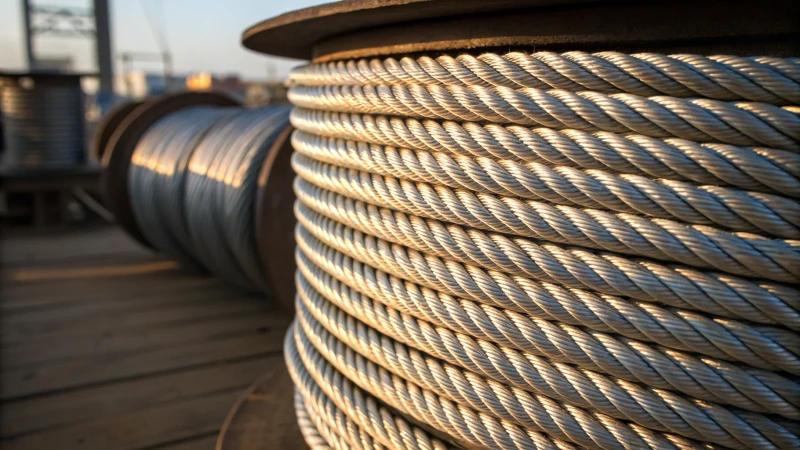
Tensile Strength and Flexibility
Imagine stepping into an elevator with the assurance that its ropes won't snap under pressure. That's what high tensile strength provides—a peace of mind knowing these ropes can handle hefty loads with ease. Flexibility is just as critical; it allows the rope to gracefully curve around sheaves and pulleys1 without a hitch.
I once toured a skyscraper construction site and saw firsthand the importance of these attributes. The engineers were using an 8×19 wire formation, praising its perfect balance of strength and flexibility that could manage the building's rapid vertical journeys.
Resistance to Wear and Elongation
In the hustle and bustle of everyday use, elevator ropes endure constant friction. That's why resistance to wear is non-negotiable. Many of these ropes come with polymer coatings that can extend their life by up to 30%. I remember chatting with a procurement manager who swore by these coatings, mentioning how they cut down on maintenance costs significantly.
Low elongation is another key feature, helping ropes maintain their length over time. This is a boon in high-rise buildings2 where long travel distances make frequent adjustments impractical.
Smooth Operation at High Speeds
Have you ever felt the gentle glide of an elevator? That's smooth operation at work, crucial for both comfort and reducing mechanical stress. It's a detail I once overlooked until I experienced a jolty ride that reminded me of its importance.
| Table: Steel Wire Rope Characteristics | Feature | Importance |
|---|---|---|
| Tensile Strength | Supports heavy loads | |
| Flexibility | Bends without damage | |
| Wear Resistance | Minimizes friction | |
| Low Elongation | Maintains length | |
| Smooth Operation | Enhances comfort |
Polymer Coatings
Polymer coatings aren't just for show; they significantly reduce metal-on-metal contact, minimizing friction and shielding against the elements. I once attended a seminar where experts discussed various polymers—some even offer enhanced temperature resistance, ideal for elevators exposed to fluctuating climates.
Understanding these features helps procurement managers and engineers like myself choose steel wire ropes that not only meet performance demands but also uphold the highest safety standards.
Elevator ropes require high tensile strength for safety.True
High tensile strength ensures elevator ropes can support heavy loads securely.
Polymer coatings increase rope service life by 50%.False
Polymer coatings can extend rope life by up to 30%, not 50%.
Why Choose 8×19 and 8×36 Wire Rope Constructions for High-Speed Applications?
Remember when you first realized the importance of choosing the right materials for a project? I had a similar revelation with wire ropes.
8×19 and 8×36 wire rope constructions are ideal for high-speed applications because they offer exceptional flexibility, strength, and durability, ensuring smooth operations under dynamic conditions. This makes them perfect for demanding environments like elevators and cranes.
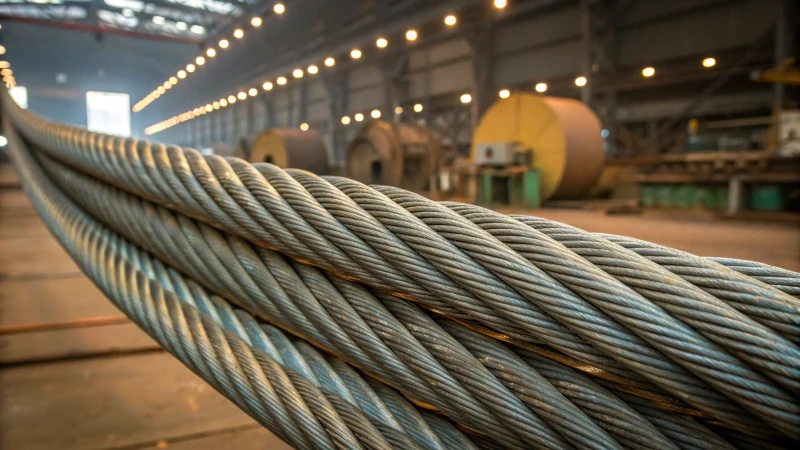
Understanding Wire Rope Constructions
I still remember the first time I had to choose wire ropes for a major project. It felt like diving into a sea of numbers and specifications. The 8×19 and 8×36 constructions stood out. They aren't just numbers; they represent 8 strands with 19 or 36 wires each, a balance of strength and flexibility3 that’s crucial when you're dealing with heavy machinery.
| Construction Type | Number of Strands | Wires per Strand |
|---|---|---|
| 8×19 | 8 | 19 |
| 8×36 | 8 | 36 |
Advantages in High-Speed Applications
- Flexibility: Picture this—you’re in an elevator, and it stops suddenly. It’s the flexibility of these ropes that ensures such situations don’t lead to disaster. They handle the stress during those rapid ups and downs with ease.
- Tensile Strength: I once spoke to a crane operator who said the strength of these ropes gave him peace of mind when lifting heavy loads.
- Resistance to Wear: These ropes are like the marathon runners of the wire world—they just keep going, minimizing wear and tear.
- Vibration Dampening: Ever been in a noisy elevator? That’s what happens when you don’t have ropes that dampen vibrations properly, which is vital in elevator systems4.
Comparing With Other Constructions
It's like comparing apples to oranges when you put 6×19 up against 8×19 or 8×36. Sure, it might work for less demanding tasks, but for the real heavy lifting and fast-moving scenarios, you need the best.
- 6×19 vs. 8×19/8×36: The difference lies in performance under pressure—literally. For high-speed dynamics, you can’t compromise on flexibility or durability.
Whenever you're delving into wire rope selection, it's always wise to consult with specialists or examine material specifications5 that detail these capabilities. It’s not just about picking a product; it’s about ensuring safety and efficiency.
8×19 ropes have more wires per strand than 8×36 ropes.False
8×19 ropes have 19 wires per strand, fewer than 8×36's 36 wires.
8×36 ropes offer better vibration dampening than 6×19 ropes.True
The intricate design of 8×36 helps dampen vibrations effectively.
How Does Polymer Coating Enhance Steel Wire Rope Durability?
Imagine being on a construction site, relying on steel wire ropes to lift massive loads effortlessly. But what ensures these ropes don't give way under pressure?
Polymer coating enhances steel wire rope durability by creating a protective shield against harsh elements, minimizing friction-induced wear, and boosting resistance to corrosion and chemical exposure.
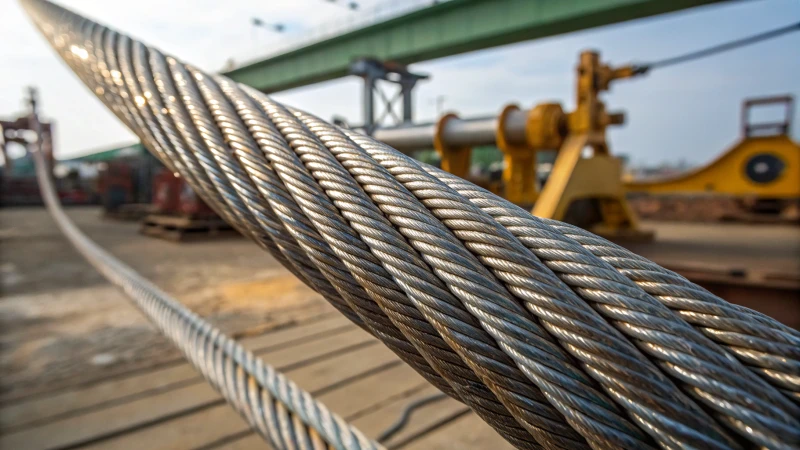
Protective Barrier Against Environmental Factors
I remember when I first learned about the power of polymer coatings. It was during a project near the coast, where moisture and salt could wreak havoc on steel. These coatings acted like a superhero cape for our ropes, shielding them from the elements. Imagine PVC and nylon as the knights in shining armor, ready to fend off anything the environment throws their way. They stand strong against pollutants and moisture, making them invaluable in marine and industrial settings6.
Reduced Wear Through Decreased Friction
In the world of machinery, friction is the enemy. I once watched as polymer-coated ropes glided effortlessly over pulleys, reducing wear dramatically. It was like seeing magic in action—no more grinding and chafing. The smoother surface provided by the coating decreased contact with machinery parts, leading to less mechanical wear7 and a longer lifespan for our ropes.
Improved Corrosion Resistance
Corrosion is the silent killer of steel wire ropes. I recall a time when we had to replace entire sets due to rust, costing us time and money. Enter polymer coatings—our new best friend. By using materials like polyurethane, we fortified our ropes against chemicals and corrosive substances. It felt like wrapping each wire in an invincible layer, perfect for tough construction and mining environments.
| Coating Material | Advantages |
|---|---|
| PVC | Cost-effective, good abrasion resistance |
| Nylon | High strength, excellent durability |
| Polyurethane | Superior chemical and corrosion resistance |
Considerations for Different Industries
In high-speed elevator systems, where rapid acceleration and deceleration create immense stress, I’ve seen firsthand how polymer coatings shine. The 8×19 construction8 ropes benefit from enhanced flexibility and wear resistance, making them a top choice.
In mining equipment often requires ropes that can withstand extreme conditions; these coatings reduce rust risk and protect against abrasive particles. They’re like having an insurance policy for our equipment’s longevity.
Economic Benefits of Polymer Coating
Initially, I was skeptical about investing more in polymer-coated ropes. But then I witnessed the long-term savings: fewer replacements, reduced maintenance costs, and minimal downtime. It's like buying peace of mind with service life extensions of up to 30%, translating into better efficiency and cost-effectiveness over time.
Polymer coatings reduce friction in steel wire ropes.True
Polymer coatings provide a smoother surface, reducing contact and friction.
Polyurethane coatings are less effective against corrosion.False
Polyurethane offers superior chemical and corrosion resistance for steel ropes.
What factors should guide your procurement choices?
Ever felt overwhelmed trying to make the perfect procurement decision? You're not alone!
When choosing suppliers, focus on product quality, supplier reliability, cost-effectiveness, delivery timelines, and industry compliance. A structured approach helps align procurement with company goals and minimizes risk.
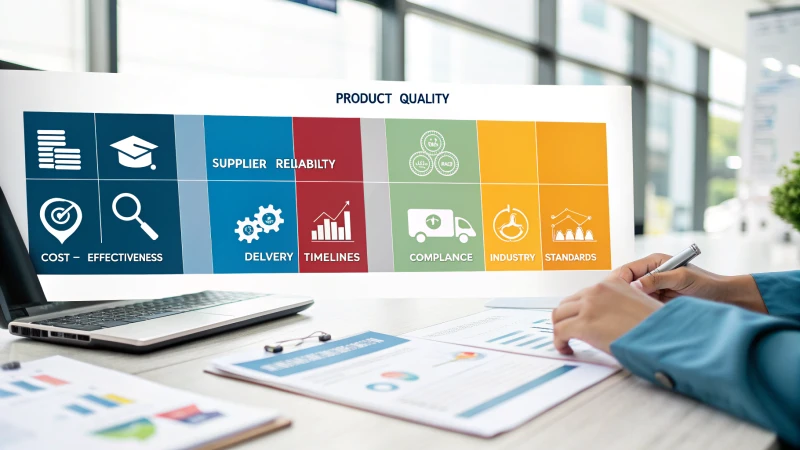
I remember the first time I was handed the responsibility of making procurement decisions. It felt like a daunting task, juggling between quality, cost, and reliability, all while ensuring compliance with industry standards. As I navigated through this intricate process, I realized that each decision had a ripple effect on the overall project success.
Evaluating Product Quality
Product quality is like the backbone of any procurement decision. I once chose a supplier based solely on price, only to find that the product didn't meet our standards, leading to additional costs and delays. Now, I ensure the products meet industry standards9 for both safety and performance to avoid similar pitfalls.
Assessing Supplier Reliability
A reliable supplier can make or break your project. I've learned this the hard way after a project delay caused by an unreliable supplier. These days, I look for suppliers with a solid track record of delivery and glowing positive reviews10. It's crucial they can meet demand and handle issues promptly.
Cost-Effectiveness Analysis
While tempting to choose the cheapest option, I've discovered that cost isn't everything. A comprehensive cost-benefit analysis, including maintenance and operational costs11, offers a clearer picture of total ownership costs. This way, I make decisions that are financially sound in the long run.
| Factors | Considerations |
|---|---|
| Quality | Meets standards |
| Reliability | Delivery history |
| Cost | Total ownership |
Importance of Delivery Timelines
Aligning procurement decisions with project timelines is crucial. Late deliveries once derailed an entire project for me, inflating costs and straining client relations. Now, I prioritize suppliers known for on-time delivery12 to keep projects on track.
Ensuring Compliance with Standards
Compliance isn't just a checkbox; it's essential for safety and legality. I make sure suppliers provide products with the required certifications to avoid any legal or safety issues. Regulatory compliance13 is a safeguard against potential setbacks.
Developing Long-Term Partnerships
I've found that nurturing strong supplier relationships brings benefits like better pricing and access to new innovations. It's important to evaluate a supplier's adaptability to changing market conditions14 as well.
Utilizing Technical Support and After-Sales Service
Effective technical support can minimize downtime, something I've come to value highly. Evaluating the level of assistance available, including after-sales services15, is now a standard part of my selection process. This can significantly impact the product's long-term effectiveness.
By carefully evaluating these factors, I've been able to align procurement choices with organizational objectives and minimize risks in our supply chain. It's about making informed decisions that propel us forward rather than holding us back.
Product quality impacts long-term costs in procurement.True
High-quality products reduce maintenance and replacement costs over time.
Cost is the only factor in procurement decisions.False
Procurement involves balancing quality, reliability, and compliance, not just cost.
Conclusion
Selecting the best steel wire rope for high-speed elevators involves prioritizing tensile strength, flexibility, low elongation, and polymer coatings to enhance durability and reduce friction.
-
Understanding sheaves and pulleys helps in comprehending how wire ropes function in elevators, influencing rope flexibility and durability. ↩
-
High-rise building challenges highlight why low elongation in steel wire ropes is essential, ensuring smooth and safe elevator operations. ↩
-
Exploring flexibility advantages helps understand why specific wire ropes perform better in dynamic environments. ↩
-
Discovering how vibration control enhances elevator systems can highlight wire rope benefits. ↩
-
Material specifications provide detailed insights into construction capabilities and suitable applications. ↩
-
Discover how polymer coatings protect against environmental degradation in industrial applications. ↩
-
Learn how polymer coatings decrease friction, leading to less mechanical wear. ↩
-
Explore the benefits of the 8×19 construction in high-speed elevator applications. ↩
-
This link provides information on industry standards, ensuring product quality and safety compliance. ↩
-
Discover methods to assess supplier reliability, critical for successful procurement strategies. ↩
-
Learn about total ownership costs to make informed financial procurement decisions. ↩
-
Explore how timely deliveries impact project timelines and cost management. ↩
-
Understand regulatory compliance essentials to avoid legal issues and ensure credibility. ↩
-
Find out how building long-term supplier relationships can lead to better pricing and innovation. ↩
-
Discover the role of after-sales service in enhancing product effectiveness and minimizing downtime. ↩

